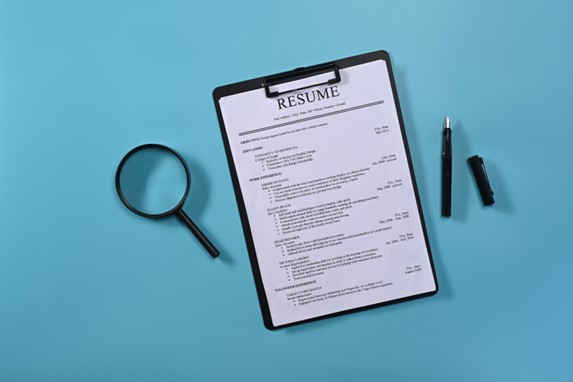In the business sphere, choosing the ideal employment type can be as significant as the candidate selection itself. From budget considerations to project requirements, every element aligns to shape workforce planning and the human resource strategy. Let’s delve into the distinctions between two prominent types of employment: permanent hires and contract hires.
A Glimpse into Permanent Hires
Permanent hires are quintessential to businesses worldwide, forming the backbone of organisational operations.
Key Characteristics of Permanent Hires
Permanent employees serve an indefinite tenure, given that both parties continue to abide by the terms of the employment contract. They typically take on key roles, exerting a profound influence on the company’s long-term goals and strategy.
These employees enjoy a vast array of benefits, including health insurance, retirement contributions, holiday allowance, and sick leave, among others. Moreover, they provide stability to the workforce and usually demonstrate higher levels of engagement and loyalty.
Delving into Contract Hires
Contract hires, on the other hand, offer unique advantages, particularly in agile, project-based scenarios or when specialist skills are required.
Hallmarks of Contract Hires
Contract hires are typically employed for a specified period or until a particular project is completed. They are often industry specialists, brought on board to inject a specific skill set or accomplish distinct tasks.
Although contract hires may not receive as extensive benefits as their permanent counterparts, they often command higher rates of pay. These employees offer flexibility and cost-effectiveness, particularly in response to short-term needs or business uncertainty.
Comparing Permanent Hires and Contract Hires: A Summary
Permanent hires and contract hires each hold their unique place in a company’s strategic approach to recruitment. Where permanent hires contribute stability and continuity, contract hires introduce flexibility and unique skills.
A Comparison Table
Employment | Tenure | Skill Set | Pay Rates | Benefits | Stability | Flexibility |
Permanent Hires | Indefinite | General and key roles | Regular | Extensive | High | Lower |
Contract Hires | Specified | Specialist skills | Higher | Limited | Lower | High |
This table encapsulates the primary differences between the two types of employment. However, the final choice should always align with a company’s unique needs, industry dynamics, and long-term objectives.
The Balancing Act: Selecting the Right Hiring Strategy
Adopting a balanced approach to hiring, one that harmonises permanent and contract hiring, can yield optimal results. Such a blend capitalises on the strengths of both categories, creating a dynamic, adaptable, and competent workforce.
Permanent Hires: The Cornerstone of Business Operations
For core business functions and roles that require long-term engagement, permanent hires remain the go-to solution. They ensure business continuity, safeguard institutional knowledge, and foster a cohesive corporate culture.
Contract Hires: The Catalyst for Change and Adaptability
In contrast, contract hires are perfectly suited for short-term projects, cyclical business needs, or when rapid adaptation to market changes is crucial. They provide a convenient, swift, and economical solution, especially when hiring niche expertise for specific tasks.
In the grand scheme of things, understanding the nuances of permanent hires versus contract hires is vital for strategic workforce planning. Organisations should remain receptive to the potential benefits of both, harnessing their distinctive features to build a diverse, robust, and efficient workforce.
Summary
There isn’t a ‘one-size-fits-all’ approach to choosing between permanent hires and contract hires. Businesses must continually reassess their requirements, stay attuned to the market dynamics, and evolve their hiring strategy accordingly, ensuring a perfect blend of permanency and flexibility.
Frequently Asked Questions
What are the key characteristics of permanent hires?
Permanent hires serve an indefinite tenure, take on key roles, and have a profound influence on a company’s long-term goals and strategy. They enjoy benefits such as health insurance, retirement contributions, holiday allowance, and sick leave.
What are the hallmarks of contract hires?
Contract hires are employed for a specified period or until a particular project is completed. They are often industry specialists with unique skill sets, and they may command higher pay rates.
How do permanent hires and contract hires differ in terms of stability and flexibility?
Permanent hires offer high stability but lower flexibility, while contract hires offer higher flexibility but lower stability.
What type of employment is suitable for core business functions and roles that require long-term engagement?
Permanent hires are the go-to solution for core business functions and roles that require long-term engagement.
In what scenarios are contract hires well-suited?
Contract hires are well-suited for short-term projects, cyclical business needs, or when rapid adaptation to market changes is crucial, especially when hiring niche expertise for specific tasks.
Benefits of Partnering with a Specialist HR Recruitment Agency
Access to a Vast Network of Professionals
A specialist HR recruitment agency has an extensive network of professionals in the human resources field. This network allows them to identify top talent with the right expertise, qualifications, and experience for high-level positions within your organisation.
Industry-Specific Knowledge and Expertise
HR recruitment agencies specialising in your industry have a deep understanding of the specific requirements and challenges of top-level HR roles. This expertise enables them to identify candidates with the ideal skill set and experience to excel in these positions.
Streamlined Recruitment Process
Working with a specialist HR recruitment agency can save your organisation time and resources by streamlining the entire recruitment process. The agency takes care of tasks such as job posting, candidate sourcing, screening, and initial interviews, allowing your HR team to focus on other essential duties.
Tailored Recruitment Strategies
A specialist HR recruitment agency develops customised recruitment strategies that align with your organisation’s needs and goals. They take into account factors such as your company culture, values, and objectives to ensure that the candidates they present are an ideal fit for your organisation.
Confidentiality and Discretion
Top-level HR roles often require a high degree of confidentiality and discretion during the recruitment process. A specialist HR recruitment agency is experienced in handling such sensitive information and can ensure that the process is conducted with the utmost professionalism and confidentiality.
Reduced Time-to-Hire
Partnering with a specialist HR recruitment consultant or agency can significantly reduce the time it takes to fill top-level HR positions. By leveraging their network, industry expertise, and recruitment strategies, they can quickly identify, screen, and present the best candidates for your organisation.
Enhanced Quality of Hire
A specialist HR recruiter’s primary goal is to identify the highest quality candidates for your organisation. Their expertise and tailored approach ensure that the candidates they present meet the specific requirements of top-level HR roles, leading to a better overall quality of hire.
Long-Term Partnership and Support
Establishing a long-term partnership with a specialist HR recruitment agency can be beneficial for your organisation’s ongoing talent acquisition needs. The agency can provide valuable insights, support, and assistance for future recruitment efforts, ensuring a consistent and effective approach to attracting and retaining top HR talent.
Why Choose PEEQ?
The average fill rate amongst HR Recruitment Agencies is 46%, but at PEEQ our average fill rate sits above 90%, So you are twice as likely to make a hire if you choose PEEQ.
This is due to two reasons:
Firstly, we only partner with our clients on an exclusive basis, so we ‘own the responsibility’
Secondly, we don’t employ recruiters. Instead, we work with trusted and proven freelance HR recruiters, to hire for our clients.
We give them the tools and infrastructure to be successful, and the rest is down to their magic and experience. Our Associates are not employed by us and only get paid for making a successful hire.
This makes them incredibly tenacious and committed to finding the best talent, which is why our fill rate sits above 90%, compared to the industry average of 46%.
More reasons to work with PEEQ
Psychometric insight reports
Obtain a unique insight into your candidates’ Cultural Fit, Strengths, Decision Making and Resilience through our accredited assessments.
Post-hire executive coaching
Set your hire up for success with a tailored coaching programme that helps them achieve their full potential personally and professionally.
Up to 6 Month Placement Guarantees
Confidently make your hire under our 2, 3 or 6 Month Placement Guarantee; safe in the knowledge that we’ll offer you a free replacement if they leave within our pre-agreed time period.
BeTalent Accredited Approach
We are proud to offer the BeTalent Accredited approach that enables us to deliver scientific candidate assessment, in accordance with the British Psychological Society standards.
This solution is for you if you want:
- An objective way to determine who is the best fit for your role
- A comprehensive understanding into your new hire before they start
- Peace of mind that you’ve made the right hiring decision.
Get in Touch with PEEQ HR Recruitment Agency
We are here to help you. If you have any questions, queries or would like to discuss a potential hire, a job application, or require clarification on anything detailed on our website, then we would love to hear from you.
Please feel free to call, email or complete the form provided and we will assist you.








